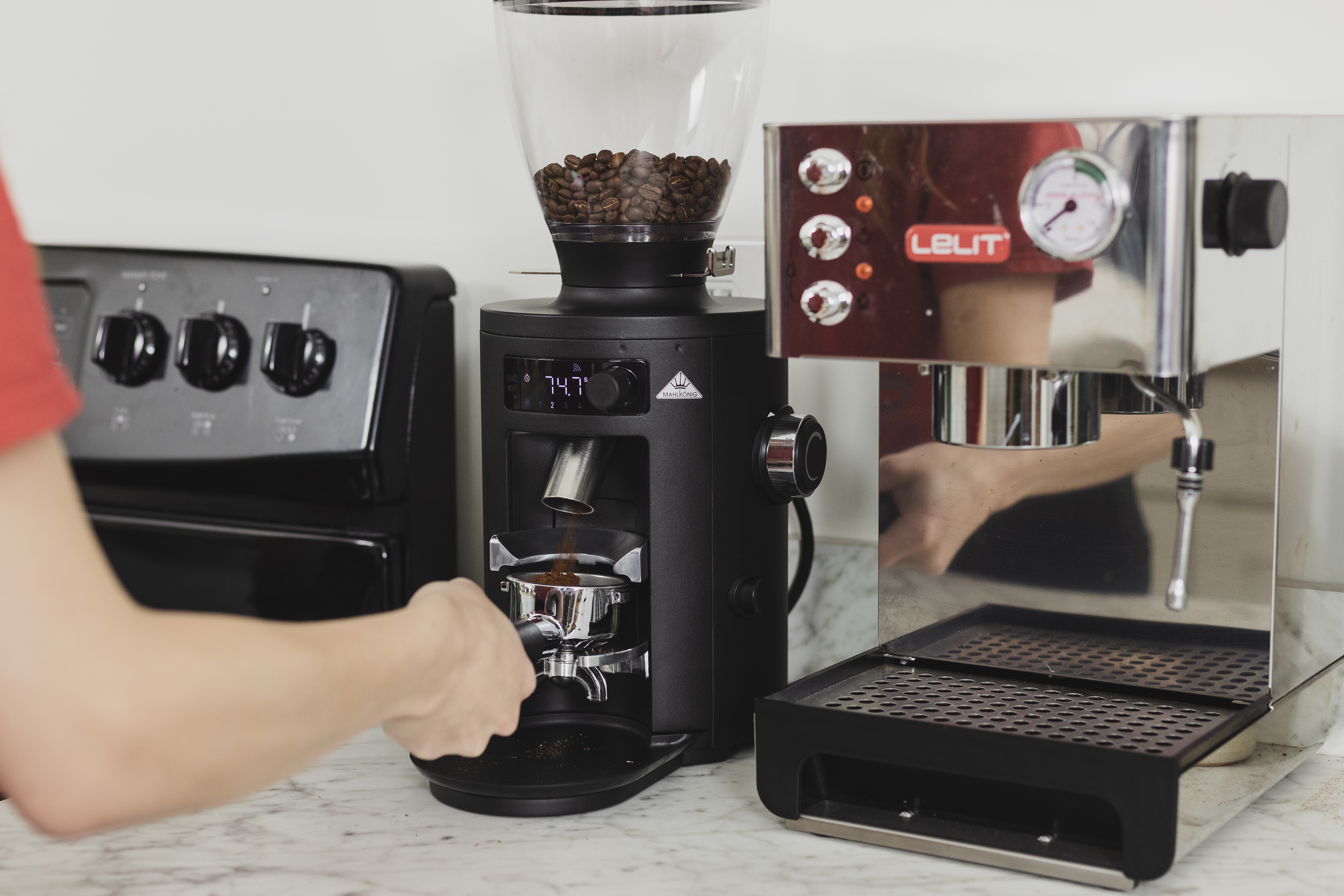Upgrading Espresso Equipment
So you own an espresso machine. You have made substandard to mediocre (and once or twice, an above-average to excellent) espresso every morning and some afternoons for the past so many years. You have even made some coffee and lattes for friends and family (that was very nice of you, by the way, you didn’t have to do that) and they, in their own way, have shown appreciation. Some went so far as to admit, raising their demitasse, “Hey, that’s not bad,” which, while kind of a compliment, does imply that they thought it would be bad. But why? Why would they doubt you?
Well, let’s be honest. The machine you have, while capable, just looks like it would produce “not bad” espresso. There is nothing inherently bad about it. It heats water in a boiler; it pumps the heated water through a coffee puck and into a cup. It creates a solution that tastes a lot like espresso, but, and here’s the rub, not exactly like espresso, or, not exactly like the espresso you have come to expect, having spent so many mornings at the little café on the corner of This and That just up the block from your home.
You (and those doubting friends) have been spoiled by what is possible. There is nothing worse than knowing that what you have been doing is not what you could be doing.
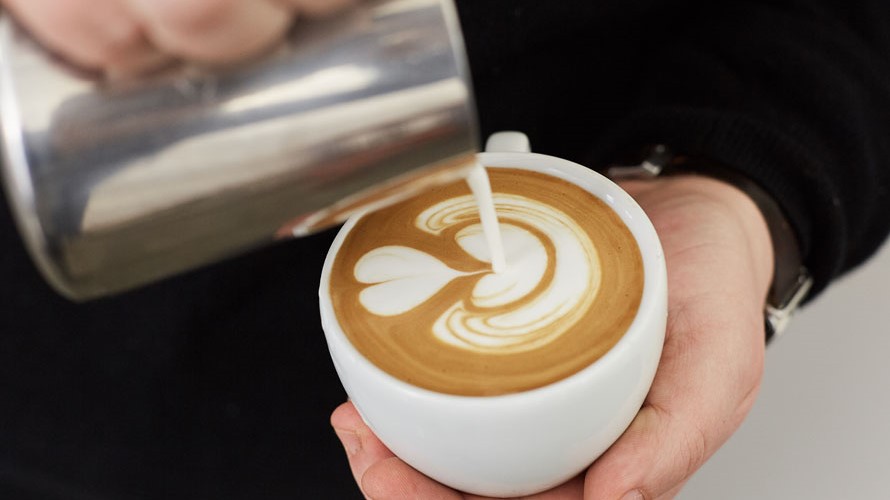
But what if your espresso machine is totally fine, capable, enough, thank you very much. You have mostly been pleased with its performance. It looks nice, too. It was not cheap. But the espresso, the flavors, the aroma, the essence: they are still not good enough. With each shot you ask, "What am I doing wrong?"
Well, then we ask: what about that grinder? The machine is the show, sure, but the grinder is the engine. How many horses you got? While often not as expensive as espresso machines, espresso grinders play a far more important role in the espresso-making process. This is the little secret of espresso. The grinder sets the ceiling.
If the grinder cannot effectively grind fine or uniformly enough, the hot water, no matter how precise the temperature or how much control you have over the flow, pressure, or other factors (just to name a few cool features of espresso machines in our catalog), will rush through the puck like spaghetti water through the pinpricks of a colander, creating a watery, sour, mess of a thing we probably shouldn’t call espresso. So we won’t. Stop making gobbledygook. That stuff may be fun to read (think Alice in Wonderland or Tender Buttons) but is not suited for drinking.
We have painted a bleak picture here, which maybe applies only to a select few. Many of us simply want a machine and grinder that do more than what we have, are more attractive, or are more reliable. The good news is that all of the tools we carry have been vetted and chosen by us. We believe in them. And we have for years helped customers choose a first, a second, and even a final home espresso setup. We'd love to do the same for you.
First Things First: The Grinder
The grinder is the most important component in coffee brewing. Full stop. The quality of the grind determines the quality of the brew. The uniformity of the grind determines the evenness of the extraction. As such, we recommend to budget first for a grinder and then, with whatever is left, find the right espresso machine to match it.
Upgrade 1: Hand Grinders
We can get more bang for our buck in a grinder without a motor or motherboard, two costly, not to mention heavy, components. But not all manual grinders are equal. If you have an inexpensive manual grinder, such as a Hario Skerton or Mini Slim, or Timemore's entry-level C2, you may able to make espresso but certainly will be unable to dial-in coffees and truly master extraction. These grinders were simply not designed to grind for espresso because they have stepped grind adjustments and burrs not suited to feed coffee on fine settings. We recommend, then, moving up to an Orphan Espresso Lido E-T or Kinu M47.
- Made for espresso (but can grind for any method)
- 48mm Etzinger conical steel burrs
- Fine-threaded stepless grind adjustment system
- Bronze dual-axle bearing system
- Neoprene travel bag included
- Made for espresso (but can grind for any method with coarse center burr)
- 47mm Black Fusion conical burrs
- Micro-stepped grind adjustment system (0.01mm per step)
- Perfectly centered by Morse Cone Principle and 4 ball bearings
- Solid stainless steel body
Upgrade 2: Electric Grinders
Entry-level espresso grinders like the Rancilio Rocky and Baratza Sette are totally respectable and capable but have small motors and burrs and few features. It is around $1,000 (minus a bit) that the possibilities begin to increase exponentially both in style and in performance. The burrs get bigger and more precise; the components more premium; the espressos more delicious. If you find yourself looking for more in an electric espresso grinder, we recommend moving up to the Mahlkönig X54 or Option-O Lagom P64 with high-uniformity SSP burrs.
- 54mm flat burrs
- 200-1,000 micron grind size range
- 4 grind-time presets (adjustable to 1/10th of a sec.)
- Interchangeable face plates (portafilter fork and catch cup)
- Easy calibration system
- Connected machine
- 64mm flat burrs from SSP (high-uniformity or multi-purpose)
- Variable RPM motor (200-1400)
- Fine-pitched stepless grind adjustment
- High-precision CNC machined body (.02mm tolerance)
- Low to no retention
- Accessories included
Second Things Second: The Machine
Upgrading from a Manual Espresso Maker
For a lot of us, the home espresso journey begins with something affordable, and no machine is as affordable as a manual one, such as the Cafelat Robot and Flair Pro 2. The La Pavoni Europiccola, while not exactly manual (it has a heated boiler, after all), is also the kind of entry-level machine from which a home barista might want to upgrade, because, being a traditional lever machine, it completely lacks bells, whistles, buttons, and gauges.
The logical leap from those above is to a single-boiler machine, which has a steam wand in addition to a grouphead, so is capable of making cappuccinos, lattes, and other milk drinks. Being electric, single-boiler machines heat water (no kettle needed) in a compact boiler that, because of the machine’s close-packed interior, is relatively near to or even above the grouphead, providing temperature stability not possible on a manual maker.
If you want to upgrade from a manual, we recommend the Lelit Anna or Rancilio Silvia.
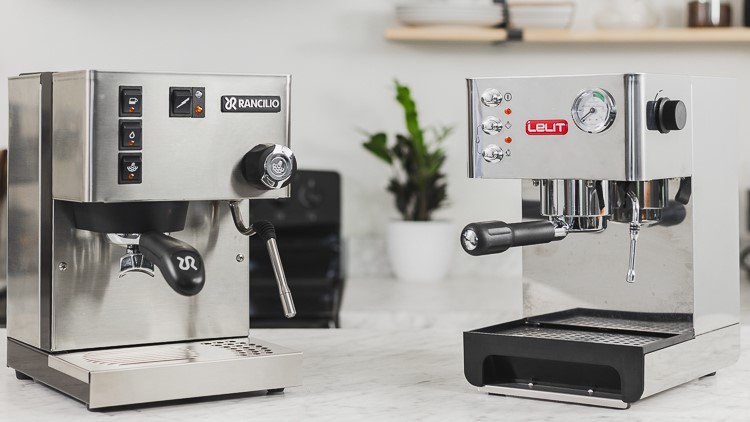
- Electric
- 300ml brass boiler
- Commercial steam wand
- 3-way solenoid valve
- 58mm grouphead / portafilter
- 2L water reservoir
- Electric
- 250ml brass boiler
- Pressure gauge
- 3-way solenoid valve
- 57mm grouphead / portafilter
- 2.7L water reservoir
Upgrading from a Single-Boiler Machine
Eventually, we will probably want to graduate from a single-boiler machine. The reasons are many but the most salient one cited is convenience. A single-boiler machine, like the Lelit Anna or Rancilio Silvia, having one boiler (and one pump), cannot brew coffee and steam milk at the same time. This isn’t a problem for those of us who want only espresso, and it isn’t necessarily a problem for those who want the occasional cappuccino or latte; but it does add an extra minute or two to the morning routine, so it might become a frustration for those who want one or more milk-drinks per day.
The solution for our waiting woes is a dual-boiler or heat-exchanger machine with which we can brew espresso and steam milk simultaneously. In addition, most machines in this category, being a little more expensive, feature other goodies, too, such as a PID controller and accompanying display to set temperatures and premium parts (e.g. a cool-touch steam wand).
If you want to upgrade from a single-boiler machine, we recommend the Rancilio Silvia Pro or the El Rocio Manus (coming soon!).

- 1.8L HX Boiler
- PID Controller
- Dual Gauge (Brew and Steam Pressure)
- Two Pumps
- Plumbable
- Cool Touch Wands (Steam and Hot Water)
- Two Boilers
- PID Controller
- Dedicated Hot Water Dispenser
- Digital Display / Control Center
- Automatic Backflush
- Color Options
Upgrading from a Semi-Automatic Machine
Dual-boiler machines are often as far as most of us go in our pursuit of the perfect espresso at home. They offer temperature stability, simultaneous brew/steam capability, and extras like automatic backflush, cool-touch steam wand, and/or sleep or wake-up programming. Pretty much all we need. But most machines in this category are semi-automatic, meaning a button must be pressed to start the shot and pressed again to stop it. Not much else can be done.
The next step up then is one that imbues the shot-making process with options unknown to lesser machines: flow and pressure control, for example, and/or shot programming (by volume or time). And what about pre-infusion? Basically, the next category is all about variables, allowing us to manipulate the process and unlock flavors hiding in roasted coffee.
If you want to upgrade from a basic dual-boiler machine, we recommend the Lelit Bianca or El Rocio Zarre.
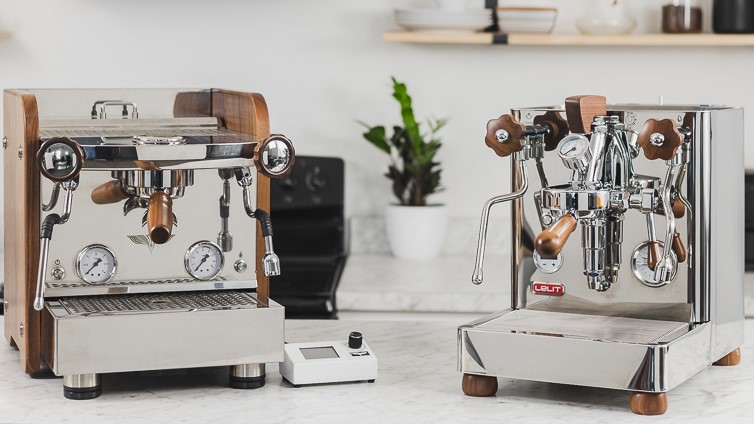
- Programmable Pre-infusion
- Pressure Profiling Console
- Eco Mode
- Programmable Shot Times
- 3 PID
- Color/Finish Options
- Programmable Pre-infusion
- Flow Control Paddle
- Eco Mode
- Repositionable/Removable Water Tank
- Wood Accents
- Bottomless Portafilter
Upgrading to the Top of the Line
We can have the best of the best, the top of the line, a one-group commercial-capable espresso machine, on our kitchen counter, starting at just over $5,000. These machines are reserved for those of us who seek culinary excellence at home à la Viking ranges, butane torches, and Le Creuset. Aesthetics paired with high-performance. Nothing less.
What the less expensive espresso machines lack, the ones in this category will most certainly have, such as volumetrics, rotary pumps, enormous boilers, and features to boot. These can be used at home and will most make an impression, but they can also be used in small commercial operations, like catering or mobile coffee shops, having little trouble keeping up with back-to-back drinks, hour after hour.
If you want to upgrade to the best, we recommend the La Marzocco Linea Mini or Victoria Arduino Eagle One Prima.
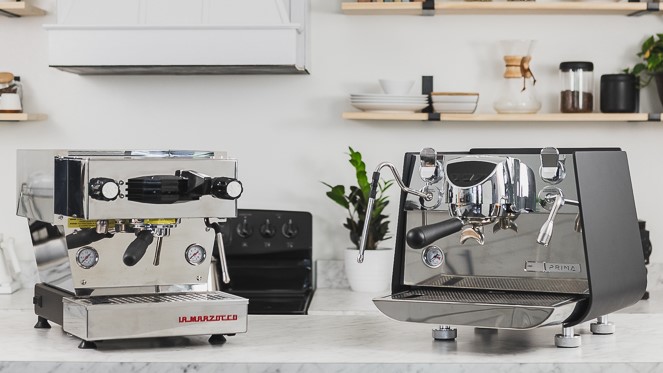
- Adjustable Brew Pressure
- 3.5L Steam Boiler
- Connected Machine (with App)
- Optimized Temperature Stability
- Internal Rotary Pump
- Many Customization Options
- Volumetric Programming
- Internal Rotary Pump
- Energy Efficient
- Control by App
- Ghost Display
- Automatic Grouphead Flush
The Last Word: Accessories
Home espresso setups are an investment. After getting a grinder and a machine (at least $700 by our calculations and likely much more), you may want to keep a lid on your wallet for the foreseeable future. But, in case that you want to get everything in one fell swoop, or in case you want to see the options to plan for future splurges, we have included some ideas for accessories, too.
Scales
Many of us spend so much money on the big equipment, especially in our first go-round, that we forget about scales and, in an obvious afterthought, buy one of those ubiquitous silver squares from giant e-commerce websites, only to discover, a few minutes after it arrives, just how wet is the drip tray environment. The answer, by the way, in case you are wondering, is very very wet. And dirty with coffee. So the scale dies. We may buy another and another and repeat this outrageous, ill-advised behavior a few times before we are finally convinced to spend a little extra for a water-resistant and long-lasting scale. If you have one of those scales, or even if you have a good scale but would like a great one, one that will last for years on a damp drip tray, we recommend upgrading to the Acaia Lunar.
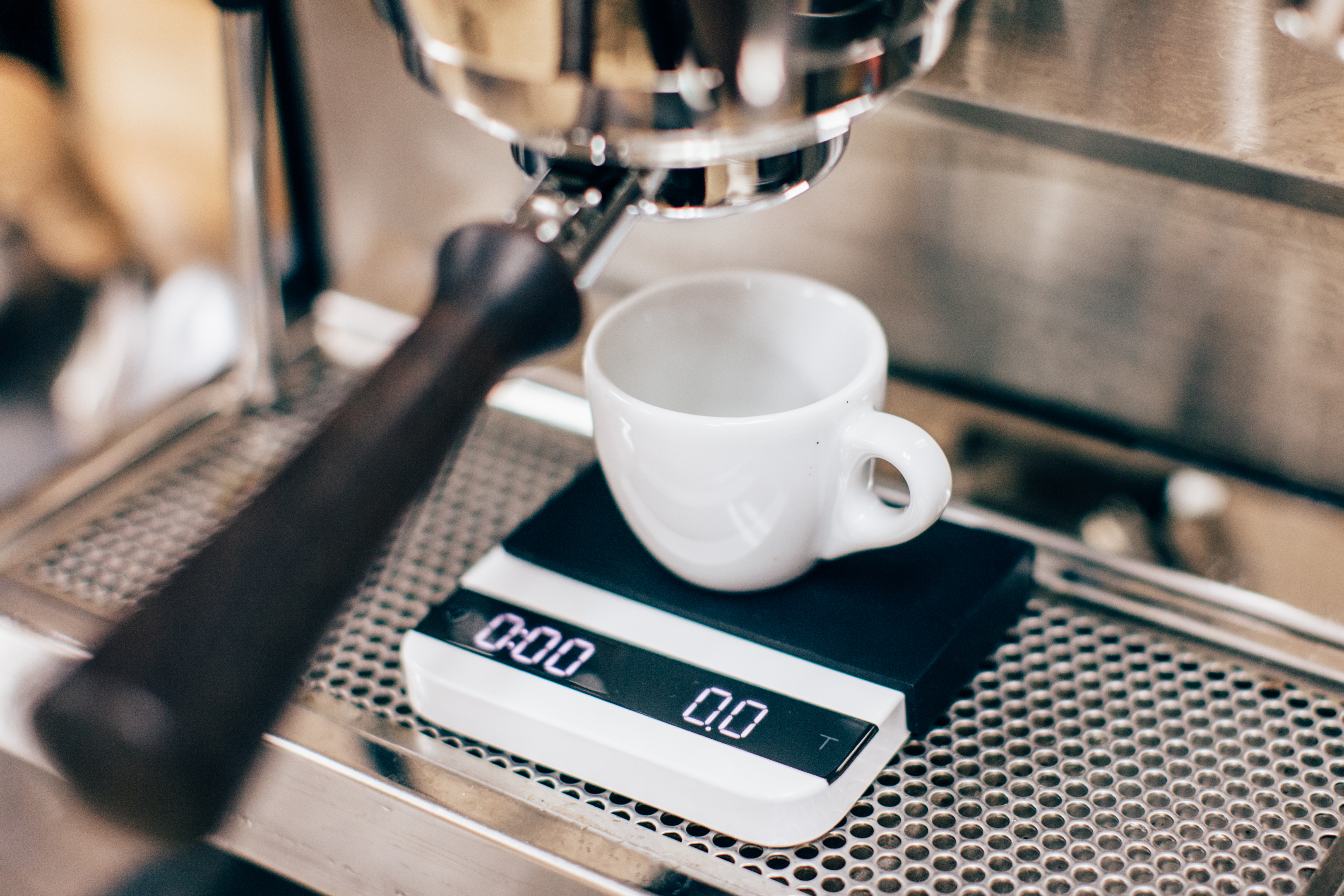
- Water-resistant
- 2-year warranty (which covers water damage)
- 2000-gram capacity with 0.1-gram resolution
- Several brewing and time modes
- USB rechargeable internal battery with 20-hour charge
- 2ms response time
- Includes calibration weight
Tampers
The tamper is another accessory on which we try to save a little money. Some espresso machine manufacturers will even include a tamper in the package, giving us the impression that we don't need to buy one. Sometimes that is the case, as with the Lelit Bianca which comes with a stylish metal tamper that is not ideal but is sufficient. More often than not, though, the complimentary tamper in the box is not a precision tamper and, while okay, totally fine, will not provide edge-to-edge coverage and as a result will leave the outer perimeter of the puck untamped and prone to channeling. If you suspect that the tamper is holding you back, we recommend upgrading to a Pullman Big Step.
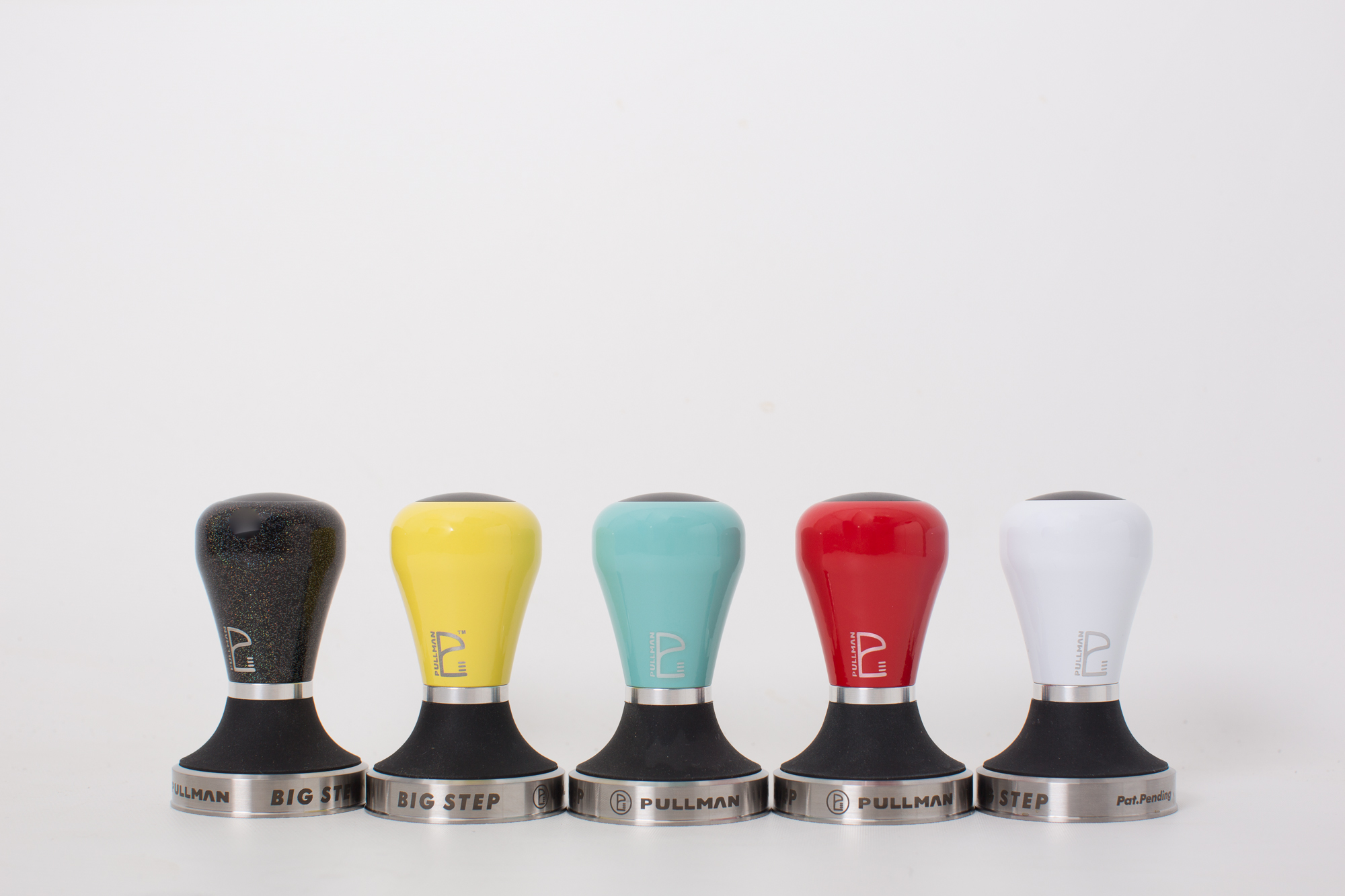
- Precision 58.55mm diameter
- 3 handle spacers (to find the perfect grip)
- Stepped piston (to prevent suction)
- Stainless steel base
- Rubber grip
- Color options
Filtration Baskets
The scale will help us dial-in the coffee down to the tenth of a gram; the tamper will help us tamp every square millimeter of the coffee puck with equal pressure; but there is still a missing piece, and a big piece at that: the filtration basket. Professional baristas use VST baskets because VST is serious about baskets, so serious and confident, in fact, that in the box the company provides the individual QC report, showing the size, uniformity, and distribution of holes, for the filter as measured by a high-tech (and patented) imaging system. For the highest and most even extractions, we recommend upgrading to a VST basket.

- Centered hole pattern (to +/- 1.0 mm)
- Precise holes (+/- 20 µm)
- Sized for most portafilters
- QC report included
- 18g or 20g models
- Standard and ridgeless models available
- Rated for 100,000 cycles
We have come a long way and talked through all the options. You have, we hope, identified the components of your home espresso upgrade, from the espresso grinder to the drip tray scale. The R&D, though, is just beginning. The fun will really begin when the boxes arrive at your front door. Once the equipment is plugged in and ready to grind and brew, and once you have gathered up all your friends for the great unveiling, you may pause, panic a little, and think, "Wait, I don't know exactly what I am doing!" If that happens, no problem. We have got you covered. Check out the Brewing 101 section of our Learning Center for articles on how to make espresso, how to steam milk and pour latte art, and more. And, if you still want some guidance, always feel free to reach out on socials or by phone.



